TEL-AVIV,
THE FIRST CENTURY

An Israel Studies Book

Israel Studies is sponsored by the Ben-Gurion Research Institute for
the Study of Israel and Zionism, Ben-Gurion University of the Negev,
and the Schusterman Center for Israel Studies, Brandeis University.
TEL-AVIV,
THE FIRST CENTURY
VISIONS, DESIGNS, ACTUALITIES
Edited by
Maoz Azaryahu and S. Ilan Troen

This book is a publication of
Indiana University Press
601 North Morton Street
Bloomington, Indiana 47404-3797 USA
iupress.indiana.edu
Telephone orders 800-842-6796
Fax orders 812-855-7931
2012 by Ben-Gurion University of the Negev and Ben-Gurion Research Institute for the Study of Israel and Zionism
All rights reserved
No part of this book may be reproduced or utilized in any form or by any means, electronic or mechanical, including photocopying and recording, or by any information storage and retrieval system, without permission in writing from the publisher. The Association of American University Presses Resolution on Permissions constitutes the only exception to this prohibition.
 The paper used in this publication meets the minimum requirements of the American National Standard for Information SciencesPermanence of Paper for Printed Library Materials, ANSI Z39.481992.
The paper used in this publication meets the minimum requirements of the American National Standard for Information SciencesPermanence of Paper for Printed Library Materials, ANSI Z39.481992.
Manufactured in the United States of America
Library of Congress Cataloging-in-Publication Data
Tel-Aviv, the first century : visions, designs, actualities / edited by Maoz Azaryahu and S. Ilan Troen.
p. cm. (An Israel studies book)
Includes bibliographical references and index.
ISBN 978-0-253-35694-9 (cloth : alk. paper) ISBN 978-0-253-22357-9 (pbk. : alk. paper) 1. Tel Aviv (Israel) 2. Tel Aviv (Israel)History. 3. Tel Aviv (Israel)Intellectual life. 4. Tel Aviv (Israel)Buildings, structures, etc. 5. Cities and townsIsrael. I. Azaryahu, Maoz. II. Troen, S. Ilan (Selwyn Ilan), [date]
DS110.T34T45 2012
956.94805dc23
2011019104
1 2 3 4 5 17 16 15 14 13 12
for Natan Aridan
SCHOLAR AND COLLEAGUE

For there is man who does his work with
wisdom, knowledge and skill
(ECCLESIASTES 2:21)
CONTENTS
/ S. Ilan Troen
/ Yaacov Shavit
/ Maoz Azaryahu
/ Hizky Shoham
/ Yoram Bar-Gal
/ Tammy Razi
/ Anat Helman
/ Deborah S. Bernstein
/ Nahum Karlinsky
/ Orit Rozin
/ Zohar Shavit
/ Barbara Mann
/ Aminadav Dykman
/ Rachel S. Harris
/ Dalia Manor
/ Volker M. Welter
/ Nurit Alfasi and Roy Fabian
/ Carolin Aronis
/ Alona Nitzan-Shiftan
/ Maoz Azaryahu
PREFACE
This volume has multiple origins. It began with an invitation by the editors of Israel Studies, Ilan Troen and Natan Aridan, to Maoz Azaryahu to prepare a special issue of the journal on the occasion of the centenary of the city. Both Azaryahu and Troen have long been interested in urban history and in Tel-Aviv in particular. Troen began his career studying the urban history of the United States and shifted the focus of his scholarship after immigrating to Israel. Azaryahu is an established cultural geographer who has researched a number of issues that repeatedly brought him back to study the city in which he lives and loves. While Azaryahu took responsibility for the special issue, he and Troen collaborated on an international symposium held at Brandeis University in March 2009 that brought together several of the authors of the special issue along with other scholars. This volume is a culling of the articles published in the special issue and of those given at the symposium and subsequently reworked for publication. During this process, the editors were ably and generously assisted by Natan Aridan, a productive and original scholar in his own right and the managing editor of the journal Israel Studies. It is in recognition for his contributions to the success of the project that this volume is dedicated to him.
The volume easily could have been larger. Tel-Aviv has emerged as a central topic in the study of Israel. It embodies many elements that fascinate students of Israel: Zionist ideologies; Arab-Jewish relations; ethnic issues; gender studies; literature and art; commemoration and celebration; as well as a host of social and physical problems and pathologies; issues of planning and preservation, and so on. This volume represents the richness and variety of an extraordinarily vigorous body of contemporary scholarship. We are also certain that much more is to come and thereby believe that this volume will be appreciated as a pioneering effort in sharing with colleagues and other readers what excites the imagination of those engaged in the study of Tel-Aviv and Israel.
Maoz Azaryahu Ilan Troen
Tel-Aviv, Israel Waltham, MA, USA
INTRODUCTION: TEL-AVIV
IMAGINED AND REALIZED
S. Ilan Troen
The interest in Tel-Aviv is no longer a parochial pursuit engaging residents of a city on the eastern shores of the Mediterranean. It has become a central topic for those who wish to understand Israel itself. Since the 1930s, metropolitan Tel-Aviv has constituted at least one-third of the Yishuv, i.e., the Jewish settlement in Mandatory Palestine, and later of the State of Israel. As such, it is not only the first Hebrew city established in nearly two millennia; it became, in but one century, one of the major centers of Jewish life in all of Jewish history. As this book suggests, the impact of Tel-Aviv on the intellectual, artistic, economic, and political life of Israel is beyond simple measure. It is for this reason that this volume brings together scholars in the areas of cultural studies, art history, sociology, anthropology, womens studies, Hebrew literature, social and economic history, geography, architecture, and town planning.
Tel-Aviv is where most of the Hebrew press and book publishers are located. It is the center of art, theatre, and communications. It is the location of most of the foreign embassies in Israel. It is where Israels stock market, banks, and most major companies are headquartered. Even the kirya, Israels Pentagon, is located in Tel-Aviv, rather than Jerusalem, the countrys formal capital. It is the major point of entry and exit between Israel and the rest of the world. Tel-Aviv is Israels global city.
Despite these perhaps obvious observations, Tel-Aviv has long been a neglected topic in scholarship on Israel and by Israelis in general. This requires explanation. Students of France must be familiar with Paris, as are students of Britain with London, and so on. The lack of scholarship I will offer two here: the first concerns the salience of Jerusalem in the Jewish world and imagination, and the second reflects the primacy of the kibbutz as the paramount symbol of Zionist achievement.
Next page



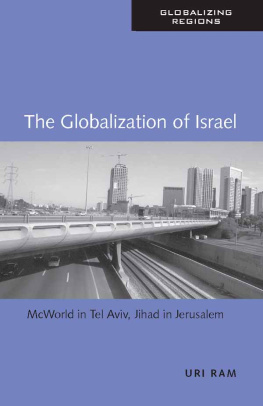
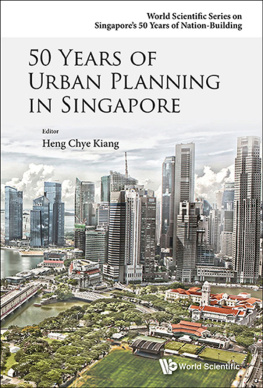

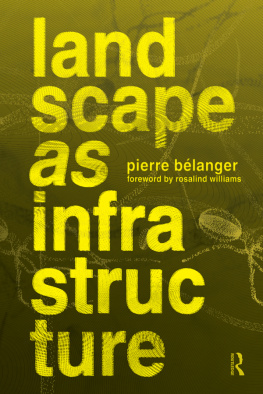
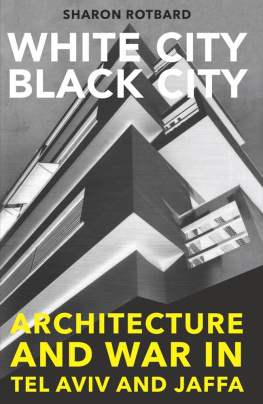
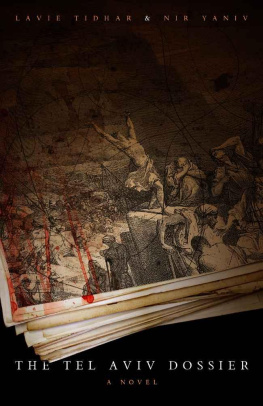



 The paper used in this publication meets the minimum requirements of the American National Standard for Information SciencesPermanence of Paper for Printed Library Materials, ANSI Z39.481992.
The paper used in this publication meets the minimum requirements of the American National Standard for Information SciencesPermanence of Paper for Printed Library Materials, ANSI Z39.481992.